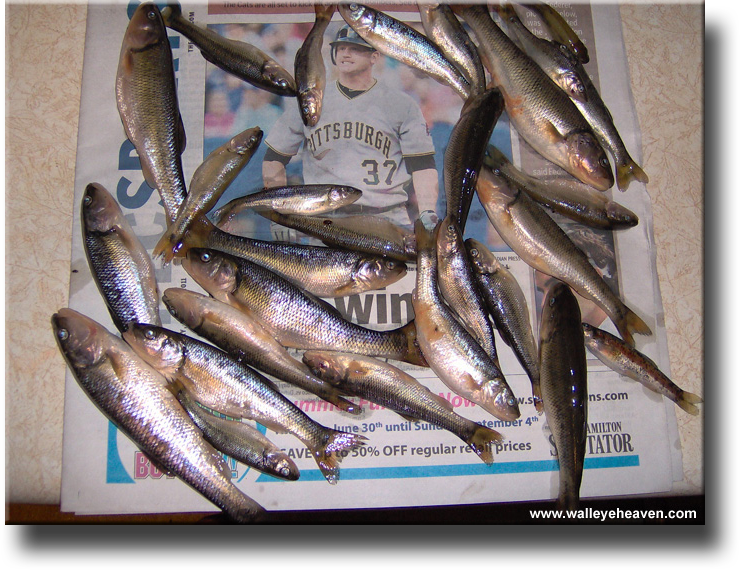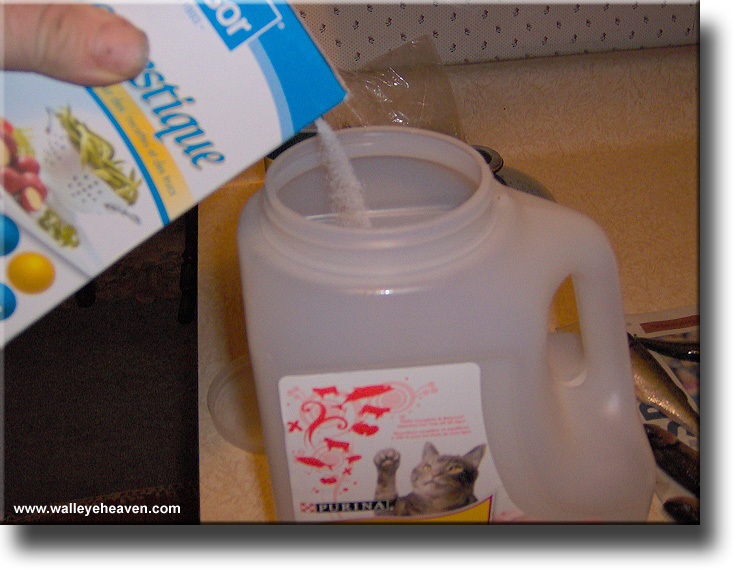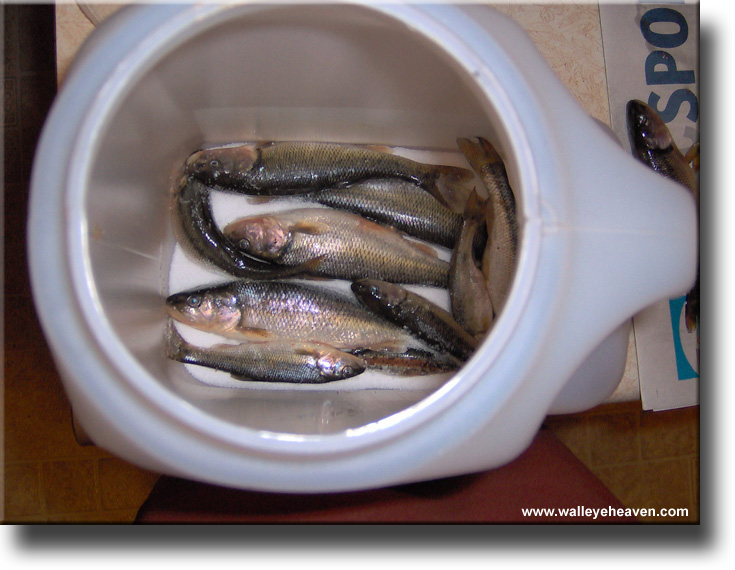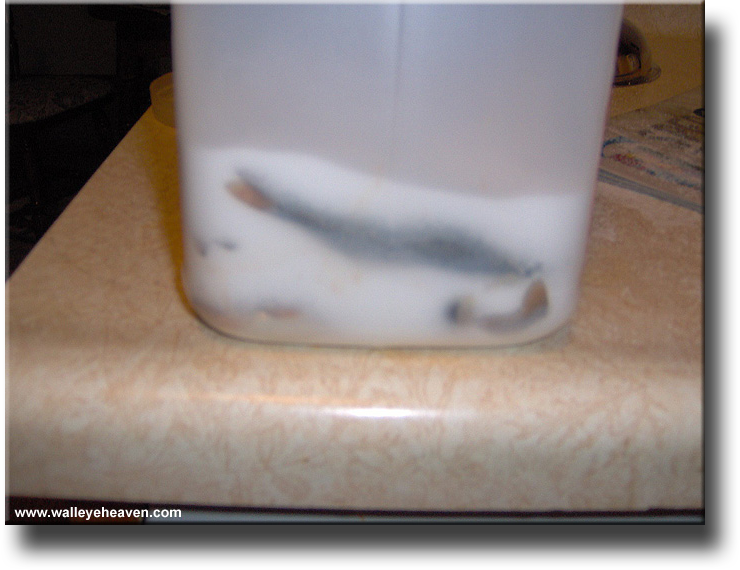Preserving Chub, Shinners & Sucker Minnows with Table Salt
You may ask yourself; what is the big deal about salted minnows? Why am I hearing more and more about fishing with salted minnows? I’ll answer that question!
First of all, in some Canadian provinces and many American states, it is illegal to use live bait on some lakes or you can’t use minnows unless they were caught in the lake you are fishing. It’s also illegal to transport live bait or bring live bait into a state, provincial or national park. It’s to stop the spread of invasive and invading species such as the Round Goby or the Rusty Crayfish. That’s one reason to fish with salted minnows.
The second reason is they work fantastic. Walleye, Northern Pike, Muskie, Smallmouth Bass, Largemouth Bass and Lake Trout and many other freshwater fish go crazy for salted minnows. The reason they go crazy is the salt! When a fish swims the muscles produce excess static electricity and there is a special chemical in the skin along the lateral line that discharges this static electricity is the form of ions. Predatory fish have sensors under their bottom jaw that detect these ions and salt mimics the ions. So when fish detect the salt, the dinner bell rings.
How to Salt Cure Minnows: Salting minnows is very easy but I have seen people make a couple of small mistakes that resulted in parts of the minnow rotting before it becomes salt-cured.
Step 1) Go to the local creek and catch some minnows or buy minnows at your local bait store. Minnows that are too big take a long time to cure and may rot so finger size or smaller is best. Leave your minnows on a newspaper to dry for a couple of hours. You don’t want them to be wet or they may form a crusty coating, which stops the curing process. Minnows bigger than your finger should be scaled and gutted, especially if they are Shinners or other fish with big scales.

Step 2) Get a container that is at least semi-transparent and has an air-tight lid. Pour about 1/2 inch of salt in the bottom. You can use table salt or pickling salt. Do not use rock salt.

Step 3) Place a layer of minnows on the salt. Make sure they are on the salt and not on each other. Cover the first layer with minnows then cover them with another 1/4 inch of salt.

Step 4) The reason you want a container that is at least semi-transparent is to see if you have minnows touching the sides with no salt touching parts of the minnow. You need to grab a fork and nudge the minnows away from the side and let the salt fall in. You want the minnow completely surrounded by salt and not pushed up to the sides of the container. Then you make sure there is a 1/4 inch layer of salt on top of the minnows and then add the next layer of minnows and keep repeating the process until your container is full of salt and minnows.

Step 5) Buy the wife something really nice, screw on the lid good and tight, put the salted minnows in the refrigerator and then give your wife the gift and at the same time you tell her you have minnows in the fridge. If you are generous with the salt and have an air tight lid, they should not smell at all and the wife will not give you a hard time. If you can’t keep them in the fridge, find the coolest spot possible.
Step 6 The night before you are going to use your dry salted minnows you can re-hydrate them by putting some in a plastic zip-loc bag and pour 100% pure Cod Liver Oil on them. After 12 to 24 hours they should re-hydrate and become plumper.
Fishing with Salted Minnows: With smaller minnows, it’s best to put them on a jig and very gently jig so you do not rip the minnow off the jig. Let the fish suck on the minnow for a few seconds before you set the hook. For the big minnows, it’s best to get bigger single hooks and a small sinker and just let the minnow sink to the bottom and then drag the minnow over the tops of rocks and weeds. When a fish hits, release your bail and let the fish take the minnow for 30 second to give the fish time to get all the minnow in its mouth. Also, many fish (especially Pike & Muskie) hit minnows by the side then spit it out to grab it again head first. So if the fish releases the minnow do not real in. Give him time to bit again.
I hope this page was helpful Gary










